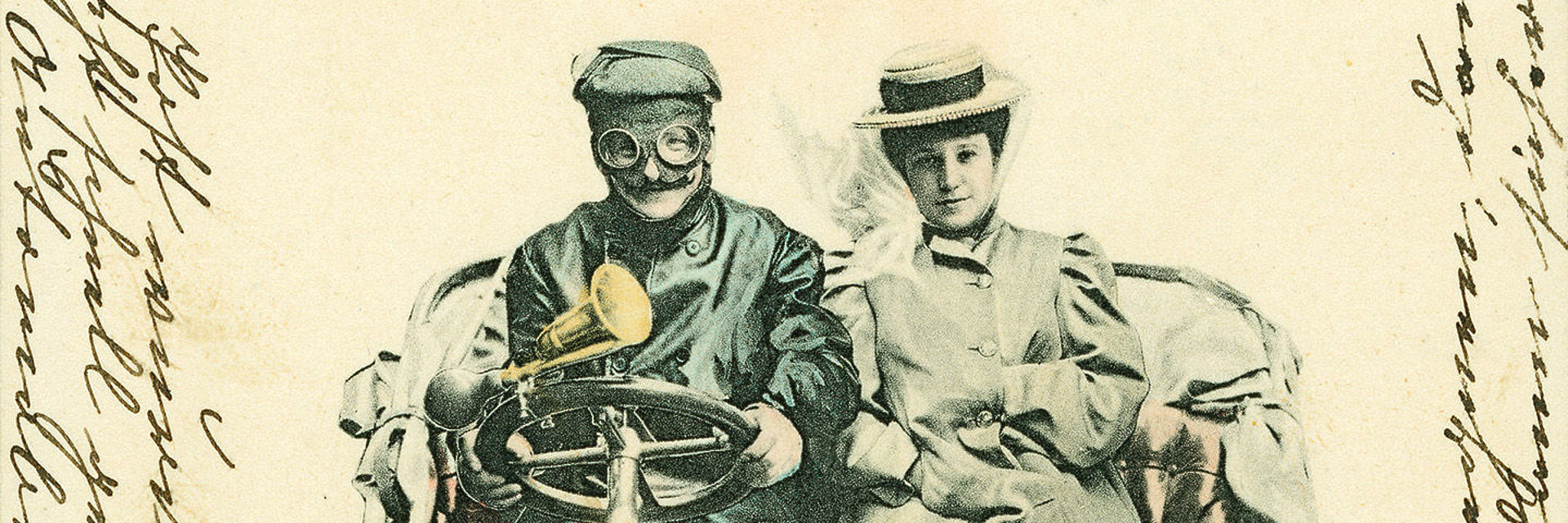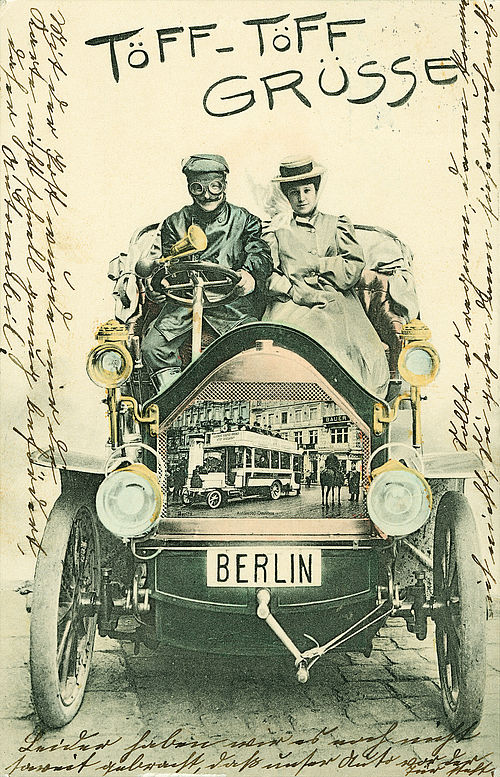
Berlin Postcard, 1907
Object of the month August 2019

SDTB, Historisches Archiv
The postcard is celebrating its 150th birthday. It was introduced in Austria as a “correspondence card” in 1869. The soon-to-be German Postmaster General Heinrich Stephan had indeed already proposed such an openly readable “post sheet” in the form of a card four years earlier. His proposal, however, was rejected due to moral concerns about open communications and worries about revenue losses. After its use was eventually officially approved in 1870, the postcard quickly gained wide acceptance in Germany.
The growing mobility of the populace in the course of industrialization increased the need for faster and easier communication. The postcard provided a means for conveying short and casual messages without the usual polite formalities and refined forms of expression. The mailing cost was soon cheaper than that of a letter and postcards were more quickly processed and delivered. The outbreak of the Franco-Prussian War in 1870 also served to enhance the popularity of postcards. Within a few months time, more than ten million “Feldpostkarten” (battlefield postcards) were sent free of charge by German soldiers from the front back to their families at home.
The rapid growth of this new medium was also closely related to the introduction of the picture postcard. The manufacturers offered motifs for every occasion and postcards quickly became more than just a means of communication as it gained popularity as a collector’s item. One favoured motif was the era’s new modes of transportation: railroads, electric trams, sailboats, airplanes, passenger ships or, as seen here, cars and omnibuses.
